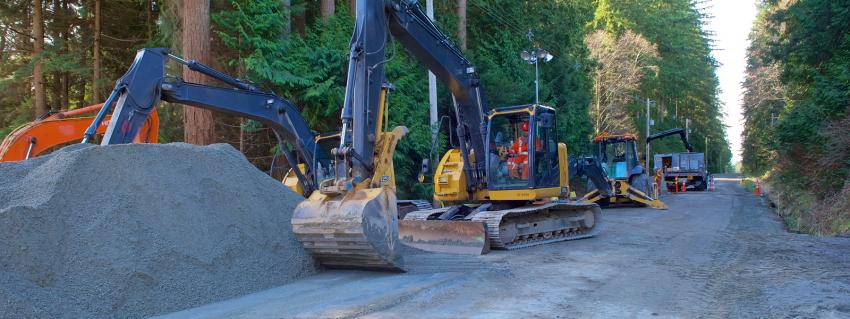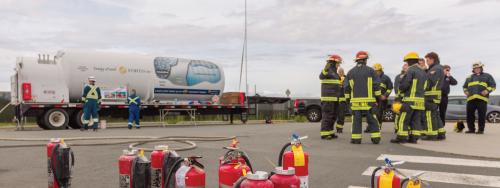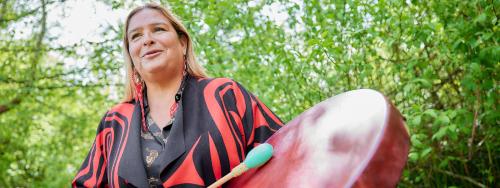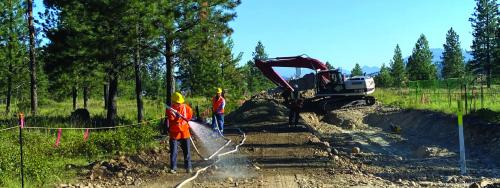To ensure our customers have the energy they need now, and in the future, we’re continuing to move our critical infrastructure projects forward during the pandemic. Safety has always been our top priority—it’s woven into the fabric of everything we do. We’ve added additional COVID-19 safety protocols as we monitor and maintain our existing infrastructure, plan ahead and build new infrastructure for our future energy needs.
Following through on critical projects
Planning for a project—including community engagement, getting regulatory approvals and preliminary fieldwork—begins long before we break ground on construction. It’s important that we keep the momentum going on critical projects that have been in the planning stages for years. Here are some of the projects we’re continuing to work on that are scheduled to begin in 2022:
- The Okanagan Capacity Upgrade: This project will add natural gas capacity that will help ensure we keep pace with increased demand in the growing Okanagan region.
- Pattullo Gas Line Replacement project: We need to build a new gas line to replace our line on the existing bridge before the B.C. Ministry of Transportation and Infrastructure decommissions it, so we can continue to provide customers in Burnaby, New Westminster and Coquitlam with natural gas.
- Tilbury Phase 2 LNG Expansion project: The proposed expansion of our Tilbury LNG storage facility would strengthen the resiliency of our natural gas system to help ensure our customers have the energy they need for their homes and businesses.
Engaging safely with the community
One of the first things we changed with the onset of the pandemic was the way we worked with each other, and the community. Everyone whose job allowed them to work from home began to do so immediately.

We pivoted away from in-person events to hosting them online, including two sets of information sessions held in June and November 2020 for our Pattullo Gas Line Replacement project. The community was able to join online events to learn more about our proposed gas line routes through Burnaby, ask questions and provide feedback.
“The virtual events were quite effective,” says Will Hyde, community relations manager, FortisBC. He credits their success to the “COVID savvy” community and the FortisBC effort to get the word out. “People had begun to understand the need to transition to this type of engagement,” he says. “The attendance and the feedback we received was on par for what we would have had in-person. I would argue that we received more questions. People seemed to be comfortable asking a question over the phone, or via the chat function.”
Will adds that although nothing can replace the experience of speaking to someone in person, he believes virtual events have their place. “It’s nice for people to be able to dial-in after work and not have to get into their car and fight traffic,” he explains. “In future, when we’re able to host in-person events again, we’ll consider hosting online events as part of the mix.”
Building partnerships
Community partnership building is an important part of project development. Pre-COVID, in-person meetings with members of Indigenous communities and other community partners were routine.
Now, we need to find new ways to build or enhance these partnerships, says Jay Morrison, Indigenous relations manager, FortisBC. “We’re aware of the additional burden of COVID-19 on a community’s capacity, and subsequent ability to engage with us,” he says. “We stay flexible and do whatever we need to do to remain accessible.”
That includes allowing more time to review documents and, when it’s time to meet, utilizing whatever virtual platform Indigenous communities prefer. Jay says the Indigenous and community relations team took that a step further when they wanted to connect with an Indigenous community about the Okanagan Capacity Upgrade project. “We funded tablets to help them with remote engagement.” The bottom line, says Jay, is to stay focused on the partnership. “We make sure we’re doing what we need to do to share information, and that communities know we’re listening to their feedback and that we care.”
Safety planning for on-site work
Working virtually isn’t possible for all of the work that needs to continue during COVID-19. For critical on-site work, we adapted by introducing stringent new safety measures.
Pre-construction activities on our Inland Gas Upgrades project started shortly after the pandemic began to impact the way we work.
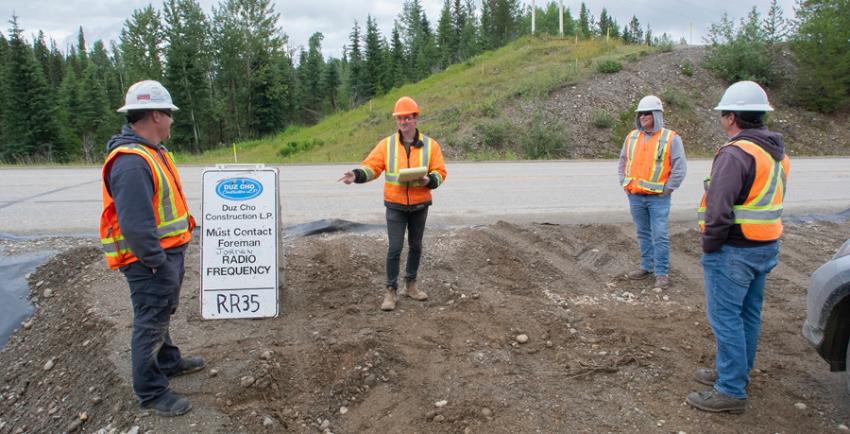
The prime contractors hired to work on the project had already submitted a robust work-site safety plan, says Chris Leblanc, safety lead, FortisBC. “Prime contractors on our major projects are responsible to coordinate safety on a multi-employer work-site,” he explains. “They submit a work-site safety plan that complies with WorkSafeBC requirements for our review as part of their vetting process.”
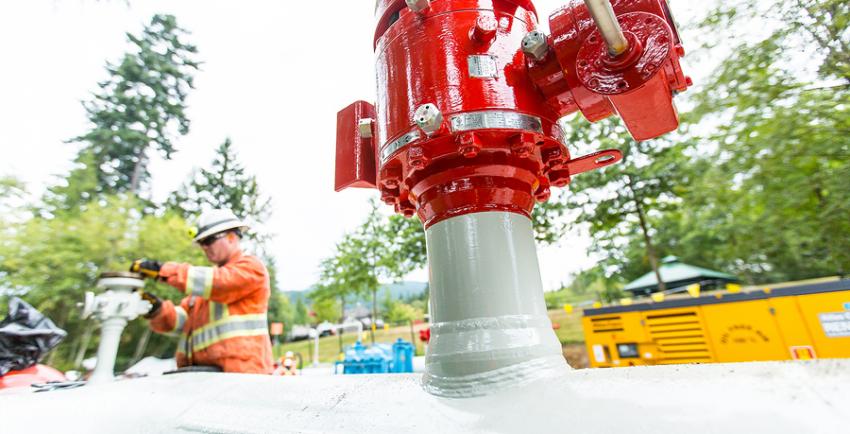
The pandemic meant the contractors needed to revise and resubmit their plans. “Their new plans needed to include COVID-19 safety requirements outlined by both BC Provincial Health and WorkSafeBC,” he says. Once the contractors revised their plans, and the additional safety requirements were addressed, pre-construction activities on the project could begin.
The COVID-19 safety measures for work-site safety according to BC Provincial Health and WorkSafeBC include the following:
- Health check: A health check is conducted with workers every morning. This may include a temperature check.
- Questionnaire: Workers are required to answer a questionnaire every morning as part of the health check to determine if they may have been exposed to COVID-19. If they have symptoms, or think they may have been exposed, they must remove themselves from the site.
- Social distance: Workers must maintain two metres of social distance from each other.
- Personal protective equipment (PPE): If two metres of social distancing can’t be maintained, workers must wear, at a minimum, a three-ply non-medical mask.
- Sanitization: Hand sanitizer and sanitizing wipes are considered part of PPE now. Wipes are kept in work vehicles to sanitize touch points and hand-sanitizing stations are readily available on work-sites.
- Signage: COVID safety signage is posted on worksites to remind everyone to social distance, and follow other COVID safety rules.
- Self-monitoring: If symptoms appear, workers must report them immediately, remove themselves from the site and consult 811 for further direction.
Community awareness
With everyone across the province doing their best to stay home, social distance and making other sacrifices to stay safe, Will Hyde thinks seeing FortisBC crews outside on work-sites might be surprising or confusing for some. “The work we’re doing is essential because these critical energy infrastructure projects still need to advance, but it’s not the typical kind of work, such as health care, most would consider essential,” he says.
That’s why FortisBC makes sure that its contractors are briefed on FortisBC’s communications protocols and are able to answer questions about why we’re continuing our work.
“Our contractors need to feel comfortable in the field in order to work safely. Understanding what to do when community members have questions goes a long way in providing this comfort. We also provide project information cards with our direct contact information should folks have more in-depth questions or comments,” he adds. “We want them to know we’re continuing our work to make sure the community has the energy it needs.”
Get more information about FortisBC’s projects in your community and contact us.
